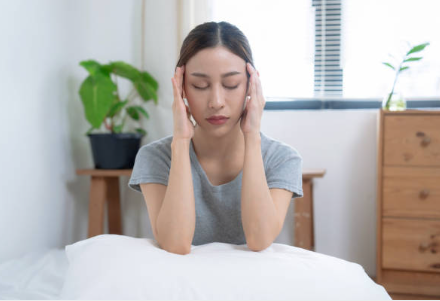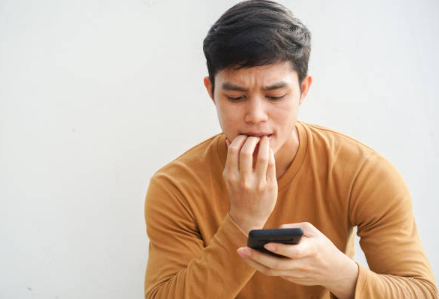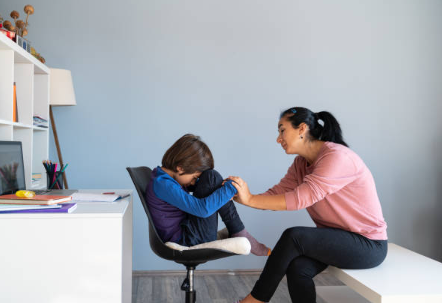Self-Help Techniques
Anxiety symptoms can be extremely frustrating, and there are some great self-help techniques to help you deal with them. Besides the techniques that you’ve probably heard of, you should also try journaling and exercising to combat your symptoms. If none of these work, you may want to seek professional help.

Selfpause Affirmation App
Download the app to get 1,000’s of affirmation meditations and everything you need to write, record and listen to your own.
Journaling

Journaling is a great way to get your thoughts out, which can help you recognize patterns of anxiety and stress. It can be private or shared, and can serve as a prompt to talk with a therapist about your feelings. You can also use it as a brain dump. It is important to remember that journaling is not a cure for anxiety or any other disorder, but it can improve your mental health and reduce your symptoms.
Journaling can be a daily or weekly habit. It will vary from person to person, but it can help reduce the symptoms of anxiety and help you become more aware of your own thoughts and coping mechanisms. Some journaling apps, such as CareClinic, provide prompts to help you get started. These journaling programs have been shown to increase completion rates and lower mental distress. They also offer charts and patterns to help you see your progress over time.
Another great benefit of journaling as a self-help technique for anxious people is its ability to help you organize your thoughts and feelings. When you are able to put all of these thoughts into context, you will be able to gain perspective and solve problems in a more productive manner. You can use this technique whenever you feel anxious or stressed.
While journaling is a great self-help technique, it can be intimidating for some people. Many people find the process difficult, particularly if they have no idea what to write. When dealing with anxiety, it can be especially hard to sit down to write. After all, your mind can run wild with anxiety, which makes it impossible to stay focused.
Creating a journal can be a cathartic experience and an enjoyable ritual. It’s a place to let your feelings out without fear of criticism. Creating a journal can help you to identify and release negative thoughts and anxiety. You can write as long as you want, but you don’t need to share everything.
Slow breathing technique

The physiological outcome of slow breathing techniques has been associated with better outcomes in clinical studies. Many studies have explored the role of the respiratory and central nervous systems. Some have also looked at the effects of meditation. There are also some studies that focused on the impact of emotional stimulation while the participants practiced the technique. The results of these studies are not conclusive but reveal some trends.
This breathing exercise can be done anywhere, whether you’re sitting or lying down. You can begin by relaxing your face and shoulders. If this is difficult, you can bend your knees and flatten your feet. Once you’ve become accustomed to it, you can gradually increase the length of time you practice it.
Several studies have shown that the Slow Breathing Technique can reduce anxiety levels. In a study, participants who practiced the technique before receiving an electric shock reported feeling less anxious. The researchers also found that it reduced physical measures of anxiety, such as sweating and blood flow to the fingers.
Slow breathing techniques also promote changes in the autonomic nervous system. EEG studies have shown an increase in alpha power and decreased theta power, and an fMRI study showed an increase in activity in subcortical areas. The psychological effects of slow breathing include a sense of comfort and pleasantness, and decreased symptoms of arousal.
The role of the nostrils in slow breathing is not fully understood, but there is evidence from animal models that it stimulates the olfactory epithelium. This may be one of the pivotal neurophysiological mechanisms subtending slow breathing techniques.
Deep breathing can help you relax and fall asleep, and can even reduce pain. The deep breathing practice requires sustained attention, and is very effective in relieving anxiety and improving sleep. The technique is also effective in reducing tension, anger and depression. In addition to reducing anxiety and promoting sleep, this technique can reduce blood pressure and heart rate.
One of the most common ways to control anxiety is to practice slow breathing exercises. They calm the mind and reduce muscle tension. However, it is important to consult with your doctor before attempting this self-help technique for anxiety. Nevertheless, a well-chosen approach can help you to gain control of your condition and enjoy more life.
Exercise

Exercise is a self-help technique for anxiety that can be extremely helpful. However, this technique is not suitable for everyone. In fact, some people might find that these exercises only make their symptoms worse, so you should seek professional help for better results. In addition to that, exercising may not be the best choice for people with generalized anxiety disorder.
The first step is to find an activity that you enjoy. For instance, if you feel anxious, try taking a walk outside. Another good idea is to engage your senses in problem-solving. When you engage your senses, you’ll be less anxious and able to handle problems more effectively.
The second step is to find a routine that works for you. There are many free or low-cost options for exercise. It is important to start at a level that you are comfortable with and increase your fitness over time. It is important to keep in mind that exercise can increase anxiety if you’re performing it too hard or at a level of intensity that is beyond your current fitness level.
Breathing exercises can also help you manage your anxiety symptoms. By focusing on breathing deeply, alternate nostril breathing can help calm down your nervous system and ease tension. Moreover, moving your body also helps relieve anxiety. Anxiety takes up a lot of space in your head, so movement can get you out of your head and reconnect with your body.
According to Connolly, five to 10 minutes of aerobic exercise every day can improve your mood and reduce your anxiety. Research shows that a regular exercise program of up to 15 weeks can improve your overall mental condition. But before starting an exercise program, you should consult a physician to make sure that it will work for you. Your doctor can suggest the right exercises for you, and he or she can also prescribe the appropriate intensity.
Besides exercise, you can also practice coherent breathing. The technique helps in reducing anxiety because it relieves the stress on your muscles. Try to do it in a quiet place, and focus on your breathing. While you’re doing this, you can also try holding a fist for a few seconds.
Cognitive behaviour therapy

Using Cognitive behaviour therapy (CBT) as a self-help technique can help you reduce the level of anxiety and manage symptoms. The therapy involves using a set of self-help techniques to help you better understand and challenge negative thoughts. The first step is to make a list of the thoughts that cause you to become anxious. Next, record these thoughts in a journal or CBT app. This will help you identify patterns. Once you’ve identified these patterns, you can try to change your behaviour to reduce your anxiety.
Cognitive behaviour therapy involves learning new skills to cope with stressful situations and anxiety. These techniques can include mindfulness exercises, calming thoughts, and breathing exercises. These exercises can be performed in a variety of settings, including the real world, your imagination, or virtual reality. The aim is to gradually increase your coping ability while decreasing your levels of anxiety.
Another technique, activity scheduling, encourages you to schedule your day in advance and identify the real trigger of anxiety. By doing this, you’ll avoid worrying about the event and instead focus on something else. The technique also involves graded task assignment, which involves creating manageable steps to complete a task. It also helps you overcome procrastination and other anxiety-provoking situations.
The main aim of cognitive behaviour therapy for anxiety is to reduce the anxiety levels of sufferers by confronting their fears and overcoming their fears. The key is to practice these techniques regularly, and gradually progress from the most anxiety-provoking situation to a situation that causes only mild anxiety. By doing this, you’ll learn to confront your fears, and you’ll learn to live with them in the real world.
CBT is considered a gold-standard treatment for anxiety disorders. It targets unhelpful thoughts and behaviors that lead to a variety of physical and psychological problems. It is a treatment that is both flexible and effective and is backed by decades of research. It is endorsed by the American Psychiatric Association and the Substance Abuse and Mental Health Services Association.
CBT works by correcting the way people think, which will lead to downstream changes in emotion and behavior. A key aim of CBT for anxiety is to help sufferers understand their thinking mistakes and become more confident. This can be done through the use of self-help techniques, such as the positive data log.
Our Top FAQ's
Some common self-help techniques that people use to improve their mental health and well-being include exercise, meditation, journaling, therapy, and setting and achieving personal goals.
To develop a self-care routine that works for you, start by identifying your needs and priorities. Consider what activities bring you joy and relaxation, and make time for those activities regularly. It can also be helpful to set aside specific times for self-care, such as carving out time in the morning or evening for a relaxing activity.
Mindfulness and meditation can be effective tools for reducing stress and improving mental clarity. To practice mindfulness, try to focus on the present moment and your surroundings, rather than dwelling on the past or worrying about the future. Meditation involves finding a quiet, comfortable place to sit or lie down, closing your eyes, and focusing on your breath or a mantra. Both practices can help you become more aware of your thoughts and emotions, and can help you develop the ability to respond to stress in a more mindful and deliberate way.
To set and achieve personal goals in a healthy and sustainable way, it can be helpful to start by identifying specific, achievable goals that are aligned with your values and long-term vision. Break your goals down into smaller, actionable steps, and create a plan for how you will work towards achieving them. It can also be helpful to enlist the support of others, such as a coach or mentor, or to join a group of like-minded individuals working towards similar goals.
There are many self-help techniques that can help you build self-confidence and self-esteem. Some strategies include setting and achieving small goals, learning new skills, practicing self-acceptance and self-compassion, and seeking support and guidance from others. It can also be helpful to surround yourself with positive, supportive people, and to focus on the things that you are proud of and appreciate about yourself.
